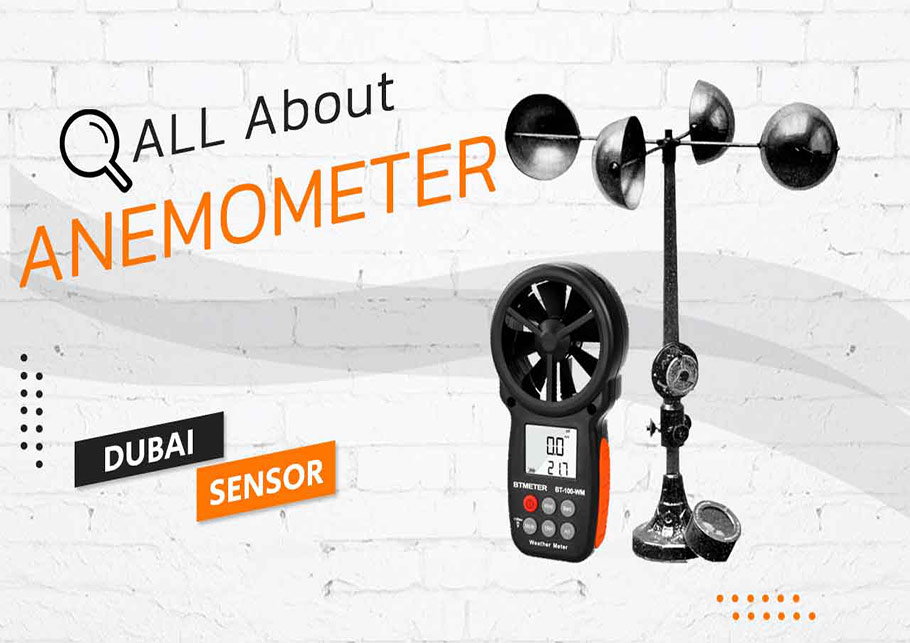Anemometer Innovations: The Most Recent Modern Technology for Wind Rate Dimension
Anemometer Innovations: The Most Recent Modern Technology for Wind Rate Dimension
Blog Article
All You Need to Learn About Anemometers: How They Function, Why They Matter, and Where to Use Them
Anemometers, however usually forgotten in the world of scientific instruments, play an essential duty in various areas, offering valuable insights into wind speed and airflow patterns. As we dig into the ins and outs of anemometer technology, we will certainly discover the inner workings of these tools, their value, and the crucial considerations when selecting the ideal anemometer for certain applications.

Anemometer Essentials
A crucial tool made use of to gauge wind speed and direction, the anemometer plays an important role in weather forecasting and numerous markets. An anemometer normally is composed of three or 4 cups that revolve in the wind, a vane that aims right into the wind, and sensors to track the movements or rotations. By determining the turnings or movements over a certain amount of time, the anemometer can figure out wind rate. The vane assists identify wind direction by aiming into the wind, offering useful information for weather condition forecasting, aviation, maritime procedures, environmental tracking, and wind energy applications.
There are various kinds of anemometers available, consisting of cup anemometers, vane anemometers, hot-wire anemometers, and sonic anemometers, each with its one-of-a-kind functions and applications. Mug anemometers are frequently used for standard wind speed dimensions, while vane anemometers are chosen for directional dimensions. Hot-wire anemometers are appropriate for reduced airspeeds, and sonic anemometers are perfect for high-precision dimensions in research study and commercial setups. Comprehending the fundamentals of anemometers is vital for exact wind data collection and analysis across various industries.
Concepts of Anemometer Procedure
Structure on the foundational understanding of anemometer essentials, the concepts of anemometer operation clarify the mechanics behind wind speed and instructions dimensions. Cup anemometers, for circumstances, have 3 or more mugs that catch the wind, triggering them to spin faster as the wind rate boosts. Hot-wire anemometers count on a heated cable that cools down as wind passes over it, with the rate of cooling identifying the wind rate.
Value of Anemometers
The importance of anemometers in meteorology and different industries can not be overstated. Anemometers play a critical role in determining wind rate and direction, providing essential information for weather condition projecting, environment researches, environmental surveillance, and aeronautics procedures. Meteorologists depend on anemometers to collect precise wind data, aiding them comprehend weather condition patterns, predict storms, and problem prompt cautions to the general public. In markets such as building, farming, sustainable energy, and maritime operations, anemometers are made use of to maximize processes, guarantee safety, and raise performance. For instance, wind ranch operators utilize anemometers to assess wind conditions and optimize electricity production from wind turbines. In the maritime sector, anemometers help ship navigation by providing real-time wind details to captains, aiding them make informed choices to guarantee risk-free trips. On the whole, anemometers are essential tools that contribute substantially to safety and security, performance, and informed decision-making in weather forecasting and a variety of industries.
Applications Across Numerous Industries
Applications of anemometers cover across varied markets, showcasing their versatility and energy beyond weather forecasting. In the sustainable energy market, anemometers play a vital role in analyzing wind conditions for wind ranch placements, guaranteeing optimum energy manufacturing. Industries like building and construction and mining make use of anemometers look at these guys to keep an eye on wind speeds, critical for security protocols, particularly when functioning at heights or in open-pit mines where solid winds can pose dangers. Anemometers are additionally essential in the aeronautics industry, helping pilots in recognizing airspeed and wind direction for risk-free liftoffs and touchdowns. The maritime sector gain from anemometers for ship navigating, helping sailors expect climate changes and change paths as necessary. In agriculture, anemometers assist farmers in handling plant splashing by providing real-time data on wind speed to stay clear of drift. Furthermore, anemometers find applications in a/c systems to maximize airflow and enhance energy effectiveness in structures. The varied usage cases of anemometers underscore their significance across different markets, highlighting their indispensable function in improving operational safety and performance (anemometer).

Choosing the Right Anemometer for Your Requirements
Picking the appropriate anemometer tailored to your particular demands is crucial for obtaining accurate wind speed and direction measurements. When choosing an anemometer, consider elements such as the designated application, needed dimension variety, environmental conditions, and preferred functions. For general functions, a mug anemometer appropriates for gauging wind rate, while a vane anemometer gives wind instructions information. Hot-wire anemometers are excellent for reduced airspeed dimensions, and ultrasonic anemometers supply high precision and longevity.

Conclusion
In final thought, anemometers play a vital duty in measuring wind rate and instructions throughout numerous markets. It is essential to take into consideration the value of anemometers informative post in order to make informed decisions when selecting the most ideal device for gauging wind problems.
There are various types of anemometers offered, consisting of cup anemometers, vane anemometers, hot-wire anemometers, and sonic anemometers, each with its one-of-a-kind features and applications. Cup anemometers are frequently used for standard wind speed measurements, while vane anemometers are liked important site for directional measurements. Hot-wire anemometers are appropriate for low airspeeds, and sonic anemometers are perfect for high-precision measurements in research study and industrial setups.Building on the foundational understanding of anemometer basics, the principles of anemometer procedure clarify the mechanics behind wind speed and direction measurements. For basic purposes, a mug anemometer is suitable for measuring wind rate, while a vane anemometer provides wind instructions information.
Report this page